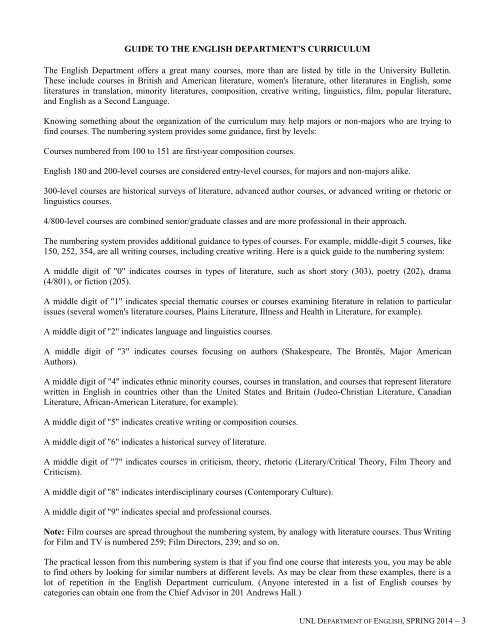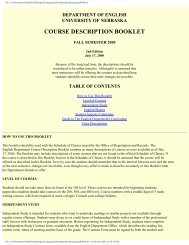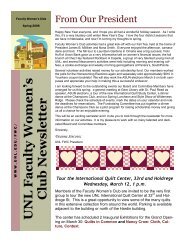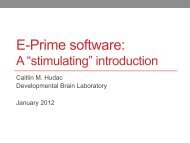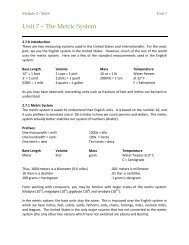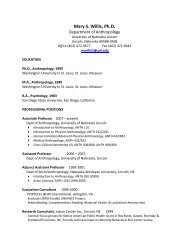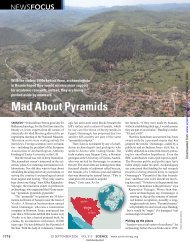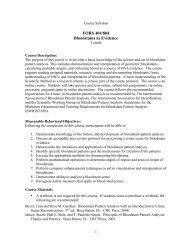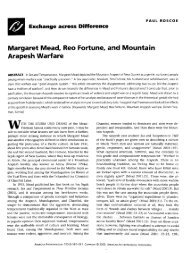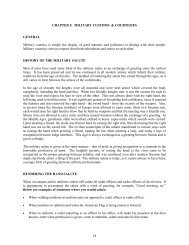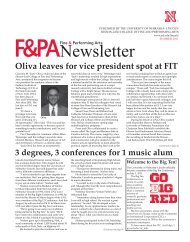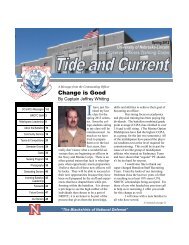COURSE DESCRIPTION BOOKLET Undergraduate Level Courses
COURSE DESCRIPTION BOOKLET Undergraduate Level Courses
COURSE DESCRIPTION BOOKLET Undergraduate Level Courses
Create successful ePaper yourself
Turn your PDF publications into a flip-book with our unique Google optimized e-Paper software.
GUIDE TO THE ENGLISH DEPARTMENT'S CURRICULUM<br />
The English Department offers a great many courses, more than are listed by title in the University Bulletin.<br />
These include courses in British and American literature, women's literature, other literatures in English, some<br />
literatures in translation, minority literatures, composition, creative writing, linguistics, film, popular literature,<br />
and English as a Second Language.<br />
Knowing something about the organization of the curriculum may help majors or non-majors who are trying to<br />
find courses. The numbering system provides some guidance, first by levels:<br />
<strong>Courses</strong> numbered from 100 to 151 are first-year composition courses.<br />
English 180 and 200-level courses are considered entry-level courses, for majors and non-majors alike.<br />
300-level courses are historical surveys of literature, advanced author courses, or advanced writing or rhetoric or<br />
linguistics courses.<br />
4/800-level courses are combined senior/graduate classes and are more professional in their approach.<br />
The numbering system provides additional guidance to types of courses. For example, middle-digit 5 courses, like<br />
150, 252, 354, are all writing courses, including creative writing. Here is a quick guide to the numbering system:<br />
A middle digit of "0" indicates courses in types of literature, such as short story (303), poetry (202), drama<br />
(4/801), or fiction (205).<br />
A middle digit of "1" indicates special thematic courses or courses examining literature in relation to particular<br />
issues (several women's literature courses, Plains Literature, Illness and Health in Literature, for example).<br />
A middle digit of "2" indicates language and linguistics courses.<br />
A middle digit of "3" indicates courses focusing on authors (Shakespeare, The Brontës, Major American<br />
Authors).<br />
A middle digit of "4" indicates ethnic minority courses, courses in translation, and courses that represent literature<br />
written in English in countries other than the United States and Britain (Judeo-Christian Literature, Canadian<br />
Literature, African-American Literature, for example).<br />
A middle digit of "5" indicates creative writing or composition courses.<br />
A middle digit of "6" indicates a historical survey of literature.<br />
A middle digit of "7" indicates courses in criticism, theory, rhetoric (Literary/Critical Theory, Film Theory and<br />
Criticism).<br />
A middle digit of "8" indicates interdisciplinary courses (Contemporary Culture).<br />
A middle digit of "9" indicates special and professional courses.<br />
Note: Film courses are spread throughout the numbering system, by analogy with literature courses. Thus Writing<br />
for Film and TV is numbered 259; Film Directors, 239; and so on.<br />
The practical lesson from this numbering system is that if you find one course that interests you, you may be able<br />
to find others by looking for similar numbers at different levels. As may be clear from these examples, there is a<br />
lot of repetition in the English Department curriculum. (Anyone interested in a list of English courses by<br />
categories can obtain one from the Chief Advisor in 201 Andrews Hall.)<br />
UNL DEPARTMENT OF ENGLISH, SPRING 2014 – 3


